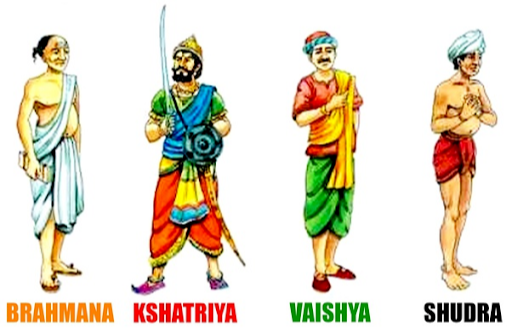During the early medieval period the relations between all the castes were very cordial and marriages could also take place between them. The caste of an issue was determined according to that of his or her father. India presents a progressive society as compared with the later period of the Medieval Age.
Brahmans were respected the most. They specialised in learning and knowledge. They were also the advisers or the ministers of the king. They were engaged mainly in study, teaching, performing sacrifices and charitable functions. The spread of Buddhism reduced their power. Brahmans were now engaged in business, trade, and also worked as an artist. They enjoyed many facilities denied to other castes for instance they could not be awarded capital punishment.
During the time of the Rigveda (1500 – 1200 BCE), there were two varnas: arya varna and dasa varna. The distinction originally arose from tribal divisions. The Vedic tribes regarded themselves as arya (the noble ones) and the rival tribes were called dasa, dasyu and pani. The dasas were frequent allies of the Aryan tribes, and they were probably assimilated into the Aryan society, giving rise to a class distinction.Many dasas were, however, in a servile position, giving rise to the eventual meaning of dasa as servant or slave.
The Rigvedic society was not distinguished by occupations. Many husbandmen and artisans practised a number of crafts. The chariot-maker (rathakara) and metal worker (karmara) enjoyed positions of importance and no stigma was attached to them. Similar observations hold for carpenters, tanners, weavers and others.
Towards the end of the Atharvaveda period, new class distinctions emerged. The erstwhile dasas are renamed Shudras, probably to distinguish them from the new meaning of dasa as slave. The aryas are renamed vis or Vaishya (meaning the members of the tribe) and the new elite classes of Brahmins (priests) and Kshatriyas (warriors) are designated as new varnas. The Shudras were not only the erstwhile dasas but also included the aboriginal tribes that were assimilated into the Aryan society as it expanded into Gangetic settlements. There is no evidence of restrictions regarding food and marriage during the Vedic period.






